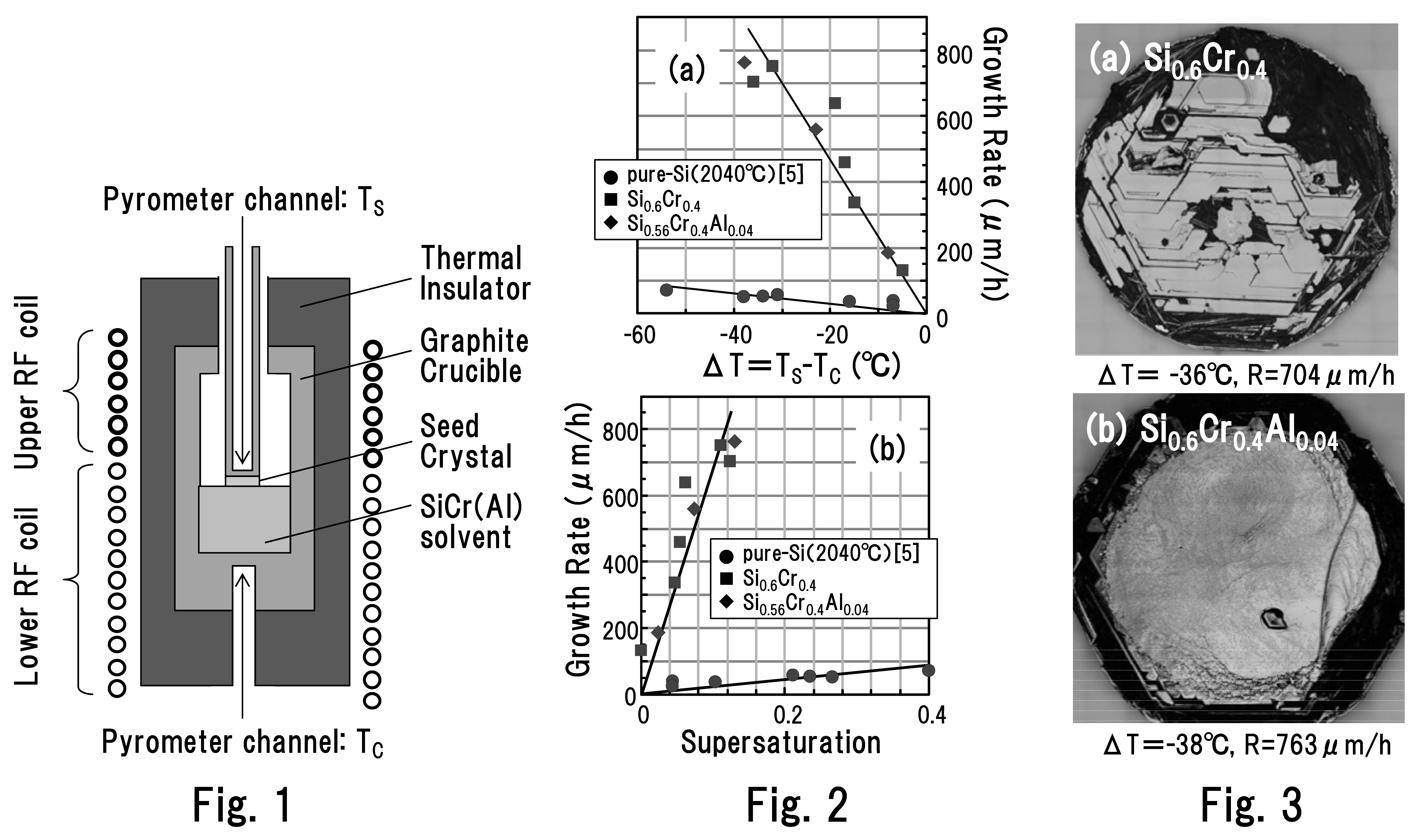| Search for content and authors |
Growth rate and surface morphology of 4H-SiC crystals grown from Si-Cr-C based solutions under various temperature gradient conditions |
| Takeshi Mitani 1,2, Naoyoshi Komatsu 1, Tetsuo Takahashi 1,2, Tomohisa Kato 1,2, Toru Ujihara 3, Yuji Matsumoto 4, Kazuhisa Kurashige 1,5, Hajime Okumura 1,2 |
|
1. R D Partnership for Future Power Electronics Technology (FUPET), Onogawa 16-1, Tsukuba 305-8569, Japan |
| Abstract |
In recent years remarkable progress has been made in solution growth of 4H-SiC crystals [1-4]. However, slow growth rate and surface roughening during growth are serious problems to be solved for applications of this method for industrial production of very-low-dislocation-density 4H-SiC wafers. Especially, step bunchings of several-hundred-nanometers height are always formed, and which often lead to macroscopic surface defects with incorporation of solvent and parasitic polytypes. Generally, growth rate and surface morphology are strongly influenced by supersaturation of solute elements and also by elemental compositions of alloy solvents. In order to find adequate conditions for high speed bulk growth with keeping a smooth surface, we have investigated the feature of the solution growth with SiCr and SiCrAl solvents. Since solubility of carbon in Si0.6Cr0.4 melt becomes larger than that in pure-Si melt by approximately 20 times, Si0.6Cr0.4 melt can satisfys the conditions of high C solubility and low supersaturation. In this paper, we present the growth rate and surface morphology of 4H-SiC grown from Si-Cr-C based solutions under various temperature gradient conditions. In addition, according to our preliminary growth experiments with SixAl1-x (x=0.01~0.2) solvents, the decrease in average step-width was observed with the addition of Al to Si solvent. Since the surface modification by Al is expected to promote step-flow growth and possibly reduce macroscopic surface defects, the changes in surface morphology for SiCr0.4Alx (x=0.01~0.05) solvents were also investigated. Acknowledgement: This work is supported by the Novel Semiconductor Power Electronics Project Realizing Low Carbon Emission Society under the New Energy and Industrial Technology Development Organization (NEDO). [1] Ujihara et al., Mater. Sci. Forum 717-720 (2012) 351. [2] Yamamoto et al., Appl. Phys. Express 5 (2012) 115501. [3] Daikoku et al., Mater. Sci. Forum 717-720 (2012) 61. [4] Kado et al., Mater. Sci. Forum 740-742 (2013) 73. [5] Komatsu et al. Mater. Sci. Forum 740-742 (2013) 23. Fig. 1: A schimatic illustration of the growth cell.  |
| Legal notice |
|
| Related papers |
Presentation: Oral at 17th International Conference on Crystal Growth and Epitaxy - ICCGE-17, Topical Session 3, by Takeshi MitaniSee On-line Journal of 17th International Conference on Crystal Growth and Epitaxy - ICCGE-17 Submitted: 2013-04-11 11:18 Revised: 2013-04-15 15:07 |